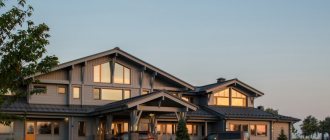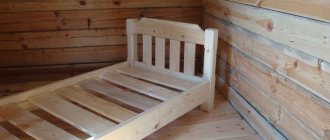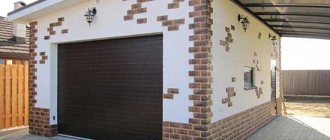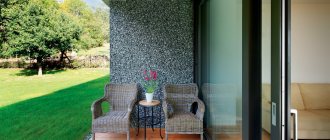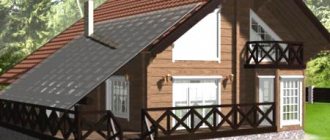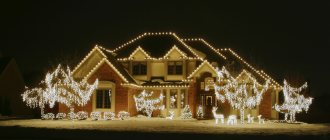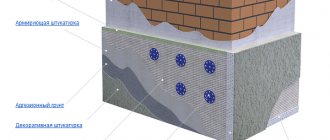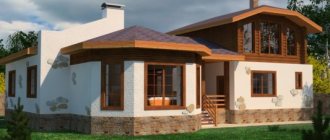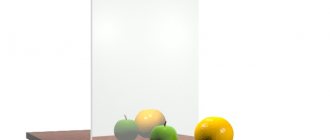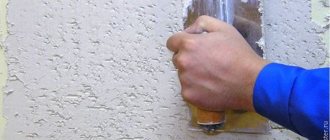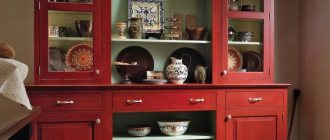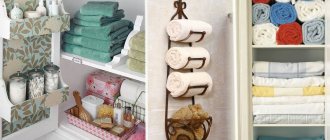Why finish the façade?
Facade finishing is necessary not only for aesthetic reasons. It protects the wall from moisture, sun and mechanical damage. Walls of any structure can be plastered, faced with brick or covered with a curtain wall. However, it is important to use finishing materials correctly. One of the basic rules says: the vapor permeability of the finish, if there is no air gap between it and the wall, should be higher than that of other components of the wall. In addition, if you need to control the condition of structures or insulation, the finishing should allow this. Depending on the type of finishing, insulation systems are classified, distinguishing wet plaster and curtain ventilated facades. The first requires rigid insulation and certain types of plaster. The second does not make any special demands on them.
EVERYTHING YOU NEED FOR THIS ARTICLE IS HERE >>>
Simplified options for facade decoration
“Lighting will create the right mood and emphasize the beauty of the decoration of the facade of the house”
If you are not ready to cover your house with siding, wood, etc. In ways to make his image complete, you can use one or more of the following design moves:
- Bright, beautiful cornices will help you quickly and easily transform the appearance of a building.
- Window frames painted in unusual colors will significantly change the exterior of a country estate. An excellent solution would be to add shutters to them
- Window and door openings, as well as house corners, can be decorated with façade elements such as towers or columns.
in modern facade finishing materials such as painted aluminum are used
In the dark, skillfully organized lighting can become a façade decor. To do this, you need to use wall and hanging lanterns of various designs, LED strips. Lighting will create the right mood and emphasize the beauty of the decoration of the facade of the house. In addition, light will make the area more comfortable and safe. Agree, it is much more pleasant to climb the well-lit steps of the porch or drive into a garage door flooded with light than to stagnate there in complete darkness.
façade cladding with bassoon under brickwork
There is another non-standard option to give the house an unusual look - to hide its walls behind a living facade. The shoots of climbing plants are distributed over a metal mesh specially arranged along the walls. Such a living finish will require careful maintenance. The shoots will need to be trimmed in a timely manner so that they do not entwine the windows, and the plants themselves will need to be watered and protected from pests. This is not particularly problematic in our time, so it’s worth taking note of the idea.
Features of plastering work
Plastering work is carried out manually or mechanically, using plastering stations, at a temperature of wall surfaces not lower than + 5 ° C and not higher than + 30 ° C, and also at a relative humidity of not more than 70%. Before finishing, dirt, dust, salts and grease are removed from the wall surfaces. Using a primer or mesh and scoring the brick wall will increase the adhesion of the plaster to the substrate. After preparing the surface, the walls are hung and beacons are installed. As a rule, they are plastered in two or three layers with a thickness of 3-20 mm (depending on the instructions), allowing each of them to dry.
What types of plasters are there?
Facade plasters allow you to create plain and colored, smooth and embossed surfaces. Thick-layer plasters are applied in layers up to 3 cm. They are used mainly for leveling the facade, and also as a base for painting and decorative plaster. Thick-layer compositions are cement and cement-lime, are highly vapor- and water-resistant, and are also suitable for facades made of any materials , thin-layer facade plasters (0.3 cm thick) are designed to cover smooth walls made of modern materials and create a decorative layer, including on top of insulation in the “wet facade” system; decorative plasters, thanks to additives, are characterized by a variety of textures and colors. The properties of these materials depend primarily on the type of binder: polymer and acrylic plasters form an elastic film that is resistant to deformation. This avoids small shrinkage cracks on the wall surface. The vapor permeability of acrylic plasters is higher than that of polymer plasters. In addition, they are suitable for all types of substrates and are often used in wet façade systems; Silicone plasters are vapor permeable, resistant to fading and cracks. These compositions can be applied to all types of mineral substrates; mineral plasters contain natural components with a small amount of polymer additives. Shrinkage cracks may form on the surface, which is not considered a coating defect; silicate plasters have high vapor permeability and water-repellent properties. Suitable for all types of bases, including insulation; warm plasters are special materials that contain mineral, ceramic or polymer substances with high thermal insulation properties. They serve as both an insulating and decorative layer. Warm plaster is convenient for insulating curved surfaces and difficult places on facades.
To impart decorative properties to the coating, plaster compositions include fillers made from natural materials - from granulated marble to glass
Selecting the style
The choice of style and decoration materials significantly changes the facade decor, as well as the price of the work.
At the beginning of facade decoration, preference was given to heavy materials, which, with the development of construction technologies, increasingly began to be replaced by lighter and easier to install ones.
A natural stone
Natural stone is the oldest facing material.
The facade, lined with stone, gives the house an aristocratic, nobility and respectability, and secretly emphasizes the high social status of its owner.
Environmentally friendly, durable, non-flammable, moisture-resistant and practical natural stone is not without its drawbacks.
Its main disadvantages are the high cost and significant load on the foundation, which should be taken into account at the stage of design and construction of the house.
Fake diamond
Artificial stone can replace natural stone in more budget-friendly projects.
It is based on cement, sand and dyes.
It attracts with its lightness, ease of installation, resistance to dirt, mold and mildew.
In addition, artificial stone tolerates temperature changes, exposure to ultraviolet radiation and chemicals quite well.
However, it is much less durable than natural stone, has lower resistance to abrasive materials and often requires additional treatment with special water-repellent agents.
Facing brick
Facing brick is one of the materials traditionally used for decorating facades.
The development of the construction industry has contributed to the emergence of a wide variety of facing bricks: they can be smooth and textured, have a traditional or original shape, and are available in different colors.
Clinker is a ceramic facade tile that has high aesthetics and excellently protects the external walls of a building.
This fairly durable material is waterproof and fireproof, has a high level of hygiene, and is environmentally friendly.
Often clinker is combined with mosaics for facade decoration. It is noteworthy that, like facing bricks, clinker retains the structural strength of the house and does not require maintenance.
Cladding sheets are easy to install and operate, and have a relatively low cost.
They are modern systems for arranging external walls and act more as energy-saving technologies than as decorative elements.
With all the variety of color and texture solutions, which is their undoubted advantage, PVC cladding panels have rather low reliability and are not durable, which indicates their main disadvantages.
Plaster finishing
Plastering the facade is a fairly common option for exterior finishing of a house, which is also a decorative feature for the facade.
The plaster looks aesthetically pleasing, can be applied to any substrate, is moisture and frost resistant, and has a relatively low price category.
One of the decorative options using plaster is rustication - artistically executed plaster that emphasizes the architectural elements of the building (windows, doors, corners).
Wood finish
Wooden structures are also used quite widely for decorating facades:
- beams,
- panels,
- lining,
- block houses.
However, such structures are expensive and have a high level of fire hazard, which requires treatment with special impregnations to reduce.
Cornices, bas-reliefs, columns and capitals, previously made of stone, are now often made of foam plastic.
How to use polystyrene foam for decoration
Facade decor made of polystyrene foam has a number of advantages:
- ease of installation,
- moisture resistance,
- thermal insulation,
- resistance to adverse environmental factors - humidity, temperature changes, heat and frost,
- variety of shapes and colors,
- durability,
- moderate cost.
In addition, facade decor made of foam plastic does not weigh down the structure due to its low weight.
Facade decor will give the house individuality and nobility, will become its exquisite addition, will give harmony to the residents of the house and will delight the eyes of passers-by.
Curtain facade
A ventilated curtain façade (VNF) consists of a metal or wooden structure attached to a load-bearing wall, onto which an external cladding is attached with some indentation. Curtain façade is ideal for all types of walls. Its installation does not require special preparation. Thanks to natural ventilation, excess moisture is removed from the wall and insulation. You can use insulation of any density, since it does not take the load, but is only attached to the wall between the frame slats. Lightweight cladding does not affect the structure of the house’s foundation and serves as a good sound insulator. A curtain wall can be installed at any time of the year. Its durability depends on the cladding material. And if damaged, there is no need to completely dismantle the structure - it is enough to replace the damaged parts. In addition, the wall and insulation behind the curtain wall will always be available for routine inspection.
The need for finishing facades for buildings and structures
A large selection of facade systems and curtain panels and their correct choice for cladding the external walls of a residential building solves several problems at once:
- increasing the attractiveness of the exterior design of the building;
- the ability to enhance the operation of the heating system due to insulation;
- significantly extend the service life of the building’s load-bearing walls.
Practical and reliable facade cladding with natural stone with an equipped ventilation system protects the surface of the external walls.
Materials for a suspended ventilated facade.
Porcelain stoneware, natural stone, ceramic tiles, aluminum composite panels, aluminum sheets, small-format facade stones (Scanrock type), vinyl, metal and wood siding, as well as foamed PVC cassettes are used as facing materials for a suspended ventilated facade. The latter can have different textures: imitate smooth plastered surfaces, brickwork, cladding with tiles, wood or panels with stone chips. You can even use roofing materials: for example, ceramic or bitumen shingles. Panels for curtain facades are produced up to 6 m long and 1-2.5 cm thick, depending on the material.
Finishing and insulation
The insulation of the facade is also mentioned here. Often the facade is finished after external insulation. The insulation located under the finishing is selected taking into account the material of the wall and the method of finishing it. For a wall made of vapor-permeable materials, the finishing and insulation must have this property. It is also important that the material does not absorb moisture from the air and easily releases it when wet, is durable and non-flammable. Insulation based on stone wool and fiberglass has these characteristics. They are suitable for all methods of insulating facades and finishing. In the “wet façade” system, when the insulation takes on the weight of the finish, the hardest insulation is used, in curtain wall façades - softer ones, and inside the walls - elastic ones.
Some tips:
When covering the facade with wooden PANELS OR SIDING, semi-rigid elastic insulation boards (with a density of up to 50 kg/m2) are used. The distance between the frame elements should be 1-2 cm less than the size of the slabs, so that they can be placed between the frame slats by pressing; and walls made of clay or silicate BRICK, expanded clay concrete or concrete can be conveniently insulated using the “wet facade” method, using slabs with a density of more than 80 kg/m3. In this case, the insulation glued to the wall will support the weight of the plaster without fastening with dowels; medium-density insulation is placed between the load-bearing and facing walls made of ceramic blocks. Since the enclosing wall is vapor-permeable and does not block evaporation, there is no need to leave an air gap inside. When facing with clinker, an air gap between the insulation and the clinker is necessary. We recommend an air gap FOR MULTILAYER walls in coastal and mountainous areas with a humid climate.
Finishing the facade of a house: characteristics of leading techniques
Facing brick
It is classified as a traditional material. This type of finishing has shown itself well in practice and is the most studied. In houses built from wall blocks, it is rational to immediately lay out the facade. The connection between the load-bearing surface and the cladding is ensured by embedded elements. In this case, both time and financial costs are reduced. In addition, the flexibility of a one-step process will allow you to coordinate the finishing of technological openings as accurately as possible.
brick façade cladding
Plastering
In combination with subsequent painting, this method remains the most budget-friendly. Option suitable for block facades. Apply a layer of plaster directly to the prepared wall or reinforced mesh. The latter must be used if the plaster is planned to be applied in a thick layer. Reinforcement will not allow the decorative surface to crack. Cosmetic repairs for such finishing are provided every five years. Plastering the façade of a house as a temporary decorative option is entirely justified.
combined facade made of painted plaster base with brickwork inserts for jointing
Decorative plaster
This is a textured finish. To create it, special compounds are used. Surfaces treated in this way acquire additional sound insulation, fire resistance, and water resistance. “Wet” plasters contain pigment inclusions that give the facade a certain color. In other cases, texture becomes an attention-grabbing factor. The rough surface does not require additional painting.
combination of a painted facade with decorative stone cladding of the base and columns of the house
Strengthening plaster
Also a popular solution. In essence, this is an improved use of simple plaster compositions. They are applied not to a bare wall, but to heat-insulating mats and slabs attached to the facade with dowels or adhesive mixtures. Mineral wool materials and all kinds of foam plastics can serve as insulation materials.
Any type of plaster can be combined with another type of decoration for the facade of the house, say, with decorative stone . In this case, it will be used to decorate corners, projections and existing columns, the base and porch, and the perimeters of window and door openings.
the most common finishing of the walls of the facade of a building is a plaster mixture followed by the application of facade putty, for a more ideal appearance of the wall surface
Stone
This decor option pleases with its durability. Both natural stone and its imitation are used. What texture, color, size and type of material to use in finishing is determined by architectural tasks. You need monumentality and rigor - use diorite or granite. For a simple touch of elegance, marble and travertine will suffice. Artificial stone is more popular due to its affordable price.
façade finishing with granite stone
Wooden block house
The finishing impresses with its environmental friendliness and long-term use. The material is initially treated with protective compounds, including fire retardants, but this does not guarantee that after years the surface will not have to be cleaned and re-impregnated. This is an excellent method for decorating foam block walls.
facade base wooden beam
Sidings
The following types can be used to decorate the facade of a house:
The façade is covered with siding panels
The former are good protection against mechanical damage, but are afraid of ultraviolet radiation. The latter are durable, mask structural defects well, and have a long service life.
The third type is durable and resistant to negative influences. Used for decoration of industrial buildings.
The last type of siding is the most expensive because it is made from natural wood. The material is aesthetic, but not durable.
Facade cladding with metal profiled sheets
Ventilated facades
When renovating frame, wooden, and brick buildings, one should not lose sight of such an inexpensive option for finishing the facades of houses as ventilated. The peculiarity of such a facade will be the presence of an air gap between the finishing and the main wall. With this design, the house will retain its original condition longer due to the ability to “breathe” and will acquire such important qualities as high thermal insulation, which will reduce heating costs, and good sound insulation. Extraneous street sounds will not bother you.
Ventilated facades work equally well from lightweight aluminum and heavy granite, so just decide how much you are willing to spend on external beauty. The walls are not brought into perfect condition before covering, because the panels will be at some distance from them and will hide any flaws.
siding panels in combination with the stone base of the building
Glass facades
This material can increasingly be seen in the decor of country cottages. Its popularity is due to the following factors:
– The grace and elegance of such solutions.
– Glass in the decoration of the facade of the house will add visual space to the interior, so that the originality of the solution in this case will be visible both from the outside and from the inside..
– Glass, as a finish, will retain its presentability for many years; to do this, it will be enough to wash it periodically.
glass walls add volume to the rooms and, of course, additional natural light
– Transparent material will improve the natural light in the rooms, which will have a positive effect on health and will save energy.
– The glass used to decorate facades is highly durable.
– The house will not turn out “cold”, because the assembly technology is such that it allows you to install an insulating layer under the glass sheets.
wooden slatted facade in combination with massive stained glass windows
Correct facing of the facade of a house with bricks
Cladding with clinker or face bricks is suitable for all types of walls, even wooden and frame ones. The brick facade gives the building respectability, individuality, and provides reliable protection from the influences of the external environment. Brick cladding significantly improves the sound insulation of walls and minimizes fluctuations in temperature and humidity in the premises. Such a facade will not require additional maintenance and will retain its original appearance for decades. The variety of colors, shapes and textures of facing and clinker bricks (including glazed, engobed, and also in the form of figured elements) in combination with a variety of masonry techniques allows you to create geometric patterns and ornaments on facades, multi-level cornices and half-columns, trim the ends, corners, window openings and arches. If the wall does not require insulation, the main and facing walls are laid simultaneously on a common foundation, connecting them to each other with anchors made of stainless or galvanized steel. If the wall of a house is to be insulated, anchors are placed in it in advance during construction. After installing the thermal insulation, a facing layer is made, departing 3-4 cm from the insulation to install a ventilation layer (for ventilation, every 4th vertical seam of the lower and upper rows of masonry is not filled with mortar). You can attach anchors to a finished load-bearing wall or build a facing wall on a separate foundation. The facing masonry is reinforced every 4 rows, and the seams are embroidered with a special, often contrasting solution.
Home decorative elements
- For large houses, owners with excellent income can arrange facade houses with columns, frescoes, balustrades, a variety of arches and figured cornices. Such elements give the exterior of the house not only an attractive, representative look, but also increase its value.
- Decorative components for the facade of a house
made of
decorative stone .
Now there are many different models of false stone panels that can be easily installed on your own. You just need to choose a material that suits the style of your home or your taste. Decorative stone panels are installed on a metal profile or wooden sheathing .
The material is very durable compared to wood; damaged panels can be easily replaced with new ones.
You can beautifully decorate only the basement of the house with such material, or you can decorate the whole house.
- one of the most common materials for decorating the facade of a house . It not only gives the house a clean, neat appearance, but also protects the walls from moisture, does not collapse, and does not fade in the sun.
- Plaster for decorative work is used on brick or block surfaces. Easy to install and can take on different colors with the addition of dyes. Frescoes and a variety of designs can be applied to plastered walls. You can use stencils or draw any geometric patterns.
Frescoes give the house a unique architecture; they can be made in various styles, in the form of trees, flowers, silhouettes of animals or people, characters from a fairy tale, Mediterranean style, traditional, country, baroque, in general, to suit the most luxurious taste.
- Tiles for finishing works house facade has a variety of shapes and colors, which makes it possible to decorate the house with individual elements.
It is very fashionable to use products made of foamed polymer. It can take different shapes; cornices, borders, columns, and all kinds of modeling are made from foamed polymer.
- The facade of a wooden house is decorated with elements made of carved wood: porticoes, friezes, platbands, cornices. An additional decoration would be wooden figurines of animals or flowers decorating window shutters or door frames. Elements made of wood must be treated with varnish in order to increase their service life and protect them from mold, mildew, and rot.
- Lighting the facade of a house
serves not only a practical purpose, but also an aesthetic one. Take care of beautiful, dim lamps and install them at the entrance, on both sides of the front door.
Facade paints
The final stage of finishing the facade is painting. The choice of colors and materials is exceptionally wide. However, in order for the coating to be durable, it is necessary to select paint based on the material of the walls and the conditions of construction of the house. Paints for walls made of brick and aerated concrete must be vapor-permeable, but not allow water to enter the walls - acrylic compositions satisfy these requirements. Paints for concrete and cement plaster must be resistant to alkalis - in this case it is recommended to use alkyd materials. For finishing fragile plastered surfaces and lime-containing facades, silicate paints (based on potassium liquid glass) are used, which form a durable and elastic coating. When building in the southern regions, paint is chosen that is especially resistant to fading, and for a house located near the water, it is resistant to high humidity in the external environment. Paints based on silicone resins have these properties. For finishing painting of wooden facades, OIL, ALKYD and acrylic compositions are used, as well as special covering (opaque) and glazing (transparent) antiseptics. For facades, matte paints (without gloss) are recommended, since gloss emphasizes minor surface imperfections. In addition, matte paints are more vapor-resistant than glossy paints. However, the latter are less dirty and more resistant to damage. Glossy paints are best used for windows, doors and individual decorative elements of the facade. Covering power characterizes the quality of the paint, and its consumption depends on the properties of the surface, the method of application and the qualifications of the painter. The color of the paints is due to pigments based on mineral substances.
Adviсe:
- When applying any finishing layers, it is important to properly prepare the wall surface.
- Gypsum-based plasters are destroyed when periodically moistened, and they are not used for facades.
- Each subsequent layer of plaster is applied only when the previous one has dried.
- Splashes of mortar from exposed brickwork must be removed before they harden.
- It is better to use paints that dry quickly, then weather changes will not spoil the result of your work.
TOOLS FOR CRAFTSMAN AND CRAFTSMAN, AND HOUSEHOLD GOODS VERY CHEAP. FREE SHIPPING. THERE ARE REVIEWS.
Below are other entries on the topic “How to do it yourself - for a homeowner!”
- Layer arrangement in frame houses What should be the arrangement of layers...
- Mesh for plaster: rules for choosing What kind of construction mesh there are Mesh for...
- How to use and apply lime paints and plasters - photos and instructions Preparation of lime solution (paint and...
- Siding and ventilated facade Ventilated facade with siding cladding…
- Do-it-yourself relief plaster How to make relief, three-dimensional plaster...
- Facade plasters for external use - application and compositions FACADE PLASTER FOR HOME (EXTERNAL...
- Which plaster to choose for finishing the facade? Choosing plaster for external decorative…
Subscribe to updates in our groups and share.
Let's be friends!
With your own hands > Construction > Finishing and decorating the facade of a residential building
Facade decoration for every day
You can decorate the outside of your home beautifully not only in honor of a holiday. The everyday design of the facade is more restrained and focuses on such simple things as the porch, flowers in tubs and lamps.
Main entrance
With the help of the right paint, you can highlight this architectural element to the maximum.
It is better to select the shade in accordance with the material and color of the house itself.
Red, terracotta and yellow colors are suitable for brickwork and the “autumn” colors of the facade. They will enliven the exterior and give it warmth. If you need to create a more “businesslike” look, it is better to choose gray, brown or black for the front entrance. You can create a more cozy atmosphere on your porch with a wreath on the door, made according to the season from greenery, autumn leaves or pine needles. And the final point in the design of the front door will be set by a stylized knocker instead of a bell.
Flowers and plants
A good way to decorate the façade is to surround it with flowers and beautiful plants.
Options for decorating the front entrance
You can highlight the main entrance with the help of neat trees in tubs on both sides of the door. You can place pots with seasonal greens on the front windows - this will give the house a cozy look. Flower baskets and mufflers on the porch will be a pleasant addition to the stylish exterior. The contour of the paths can be emphasized with the help of bright flowers and annual plants. Flowers such as lilacs, hydrangeas and peonies are pleasing to the eye regardless of the time of year.
Lighting
You can also decorate the appearance of your home with the help of decorative lamps. If you hang them on the sides of the entrance, they will illuminate the porch and door. LED and plasma flashlights are economical, have a long service life and are resistant to frost, precipitation and other negative external factors. However, solar-powered lamps can be installed on paths and in the garden. You can add brightness to your exterior design with the help of colored lampshades. When choosing lamps, it is important to ensure that they are harmoniously combined with the style of the facade itself.
Decorative elements
To add accents, you can use an unusual rug in front of the door, a mailbox or a beautiful sign with the house number. All this fills the house with special harmony and comfort.
Want more information on the topic?
Check out these articles: Cladding the facade of your house - what material to choose? The facade is the face of the house and the first thing that catches your eye... Using facing bricks to decorate the facade Facing brick as a finishing material for... Making a wet facade using the right technology Arranging a wet facade with your own hands is such a solution... Types of facades and how to make it No matter how The house was not cozy and modern inside, the first ...
